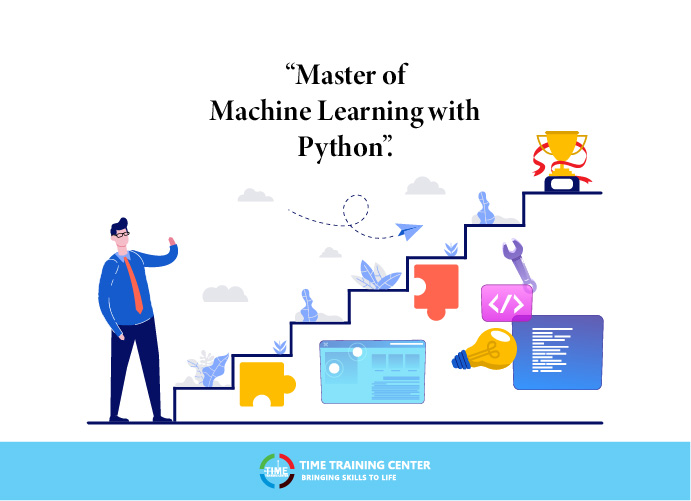From Deep Learning to Computer Vision, Speech Recognition to Anomaly Detection, Failure Detection to intelligent predictions, Machine Learning is enabling market-disrupting technologies. Machine Learning (ML) is an application of Artificial Intelligence (AI) and it is emerging as a HOT niche among tech companies and enthusiasts around the world.
While you read this piece, Machine Learning applications have already become an integral part of different industries such as Banking, eCommerce, Healthcare, Information Technology, and more. In recent years, Machine Learning enabled by Python has garnered huge popularity. A report by FinancesOnline has estimated that the Machine Learning market will grow over $13 trillion by Financial Year 2030.
Who is Using Machine Learning?
Financial Services: Banks and financial institutions around the world are leveraging Machine Learning for key purposes. From detecting fraud, executing error-free transactions to generating critical insights on data, ML is empowering financial workflows. Data Mining is another application of Machine Learning that can help identify high-risk clients and vice-versa.
Healthcare: Machine Learning is bringing a paradigm shift in the Healthcare domain. With the advent of wearable devices, sensors, and smart technology, assessing a patient's vitals in real-time is becoming a reality. ML is helping medical experts worldwide analyze and monitor the data. They can remotely raise red flags, provide improved patient diagnosis and treatment.
Transportation: We all have heard about Tesla right? Self-driving cars are a reality today! Machine Learning has made it possible for vehicles to analyze data, identify patterns, and take intelligent decisions. Both public and private transportation are experiencing a huge shift. Transportation companies are leveraging modelling capabilities of machine learning to enhance deliveries, object tracking & boost profitability.
Retail: Big eCommerce brands like Amazon utilizes machine learning algorithms to enhance their shopping experience. Have you ever recommended a product out of nowhere that you find appealing? ML algorithms study your purchase patterns, history, products liked & generate intelligent inferences. This boosts the shopping experience manifolds and helps brands convert visitors into customers.
Now we all know Machine Learning has positioned itself at the epicentre of major industrial domains, let's move ahead and understand how you can master ML with Python in Seven steps.
1. Develop Python Skills:
Python is the most preferred language for learning and practising Machine Learning. From Development, Deployment to Maintenance, Python boosts the Machine Learning project experience manifolds. Not to forget the rich, integrated Machine Learning libraries & framework Python provides. It gives you the ability to use TensorFlow, PyTorch, Apache Spark, fastText, NumPy, Flux, Keras, and several other ML libraries and frameworks.
No other programming language has such a huge repository of ML aids. Further, the Python code is highly readable and lucid. Thus, developers can build reliable machine learning algorithms and empower versatile workflows. A Python course in Abu Dhabi helps you master the language and develop ML applications. You can reduce the development time and write the best coding solutions to the dynamic challenges around.
2. Build the Foundation For Machine Learning:
Often beginners think machine learning is difficult as a lot many high-technical concepts are involved. Well, it's not like that at all! Machine Learning thrives on a few fundamental subjects that most of us have studied already. Machine Learning holistically comprise:
- Mathematics
- ML Algorithms
- Statistics
- Data Analysis
- Programming Languages
3. Install Python Packages:
As briefly mentioned above, Python packages sit at the core of Machine Learning. Python offers superior libraries and frameworks that can perform high complexity mathematical functions, integration, interpolation, signal and image processing, and several other critical operations. TensorFlow is one of the most popular frameworks of Machine Learning.
Developed by Google, TensorFlow brings aboard a ton of libraries for large-scale ML workflows and numerical computation. Pandas is another popular Python library that boosts the ML endeavours of developers. Pandas help to process both relational and labelled data. You'd find Pandas in almost every real-world ML application out there. Other popular ML libraries in Python are Matplotlib, NumPy, Scikit-learn, and SciPy.
4. Familiarise with Machine Learning Algorithms:
The moment you jump into the ML domain, you need to familiarize yourself with certain algorithms. A machine behaves as per the deployed algorithm. Let's have a look at the popular ML algorithms:
- Decision Tree
- Linear & Logistic Regression
- Support Vector Machine (SVM)
- Naive Bayes
- KNN
- Random Forest
- K-Means
A Python course can help you kickstart your Machine Learning endeavours. You can implement and run ML models through these algorithms and cater to the custom requirements and challenges.
5. Understand the Components of a Machine Learning Solution:
Data Generation & Collection: Data is the fodder for any machine learning solution. Without data, an algorithm can't function. Python enabled tools will help developers collect, clean & process raw data and feed it to ML algorithms.
Training & Testing: The training stage is where the magic happens. Developers segregate a data set in the 80:20 where 80% goes into training, and the rest 20% goes into testing and evaluating the model.
Prediction: Upon successful training and testing, the ML model can make predictions to solve a variety of problems. For instance, stock market analysis, health reporting, fraud detection, and various others. It is then one can run the model seamlessly and monitor the use cases.
6. Decoding ML Models and Algorithms: Representation, Evaluation & Optimization:
Every Machine Learning algorithm has three prime components:
- Representation: This means how to represent the data and knowledge. Representation is governed by ML concepts such as instances, decision trees, neural networks & others.
- Evaluation: Prediction, likelihood, cost margin, squared error, accuracy, and other metrics are evaluated to test the effectiveness of the candidate program.
- Optimization: Optimizer functions play a critical role in ML. They bind together loss functions and model parameters to revamp and enhance the ML model on the move. It is then ML models can perform and make better predictions.
7. Know The Difference Between Deep Learning VS Neural Network:
When starting with Machine Learning, people often use 'Neural networks' and 'Deep learning' interchangeably. However, these two are not the same and play diverse yet important roles.
Artificial Neural Networks or ANNs work like the network of neurons in our brain. Once the program starts, these neural networks get stimulated and work interconnectedly to make decisions and invoke actions. ANNs take decisions in a more human-like fashion. There are three main layers of ANN induced decision making. 'Input Layer' enters the data into the neural networks, 'Hidden Layer' processes the information & 'Output Layer' is responsible for decision making.
Deep Learning is a subset of Artificial Intelligence (AI). Computers can train themselves to ingest, process, and learn from data through Deep Learning. In a nutshell, a deep learning system is self-reliant. It leverages self-teaching through multiple layers of ML algorithms enabling neural networks. Facebook, Google, Siri, Alexa all leverage Deep Learning to enhance 24x7 and provide a better user experience.
Python-Machine Learning Is Here To Stay:
Python enabled Machine Learning is set to revolutionize the market. Through Python, developers can worry less about the coding and focus more on finding the optimal solution. Python saves development time, costs, and provides an intuitive learning environment for freshers. Now we know why Python has an upper edge over other languages and why the language is essential for Machine Learning.
ML-enabled applications such as Facial Recognition, Computer Vision, NLP, Speech Recognition & many more will continue to play a critical role in our lives. The future lies in speed and accuracy. Machine Learning algorithms backed by Deep Learning is set to revolutionize the application-development markets of the future.
 +971 2 6713828
+971 2 6713828




